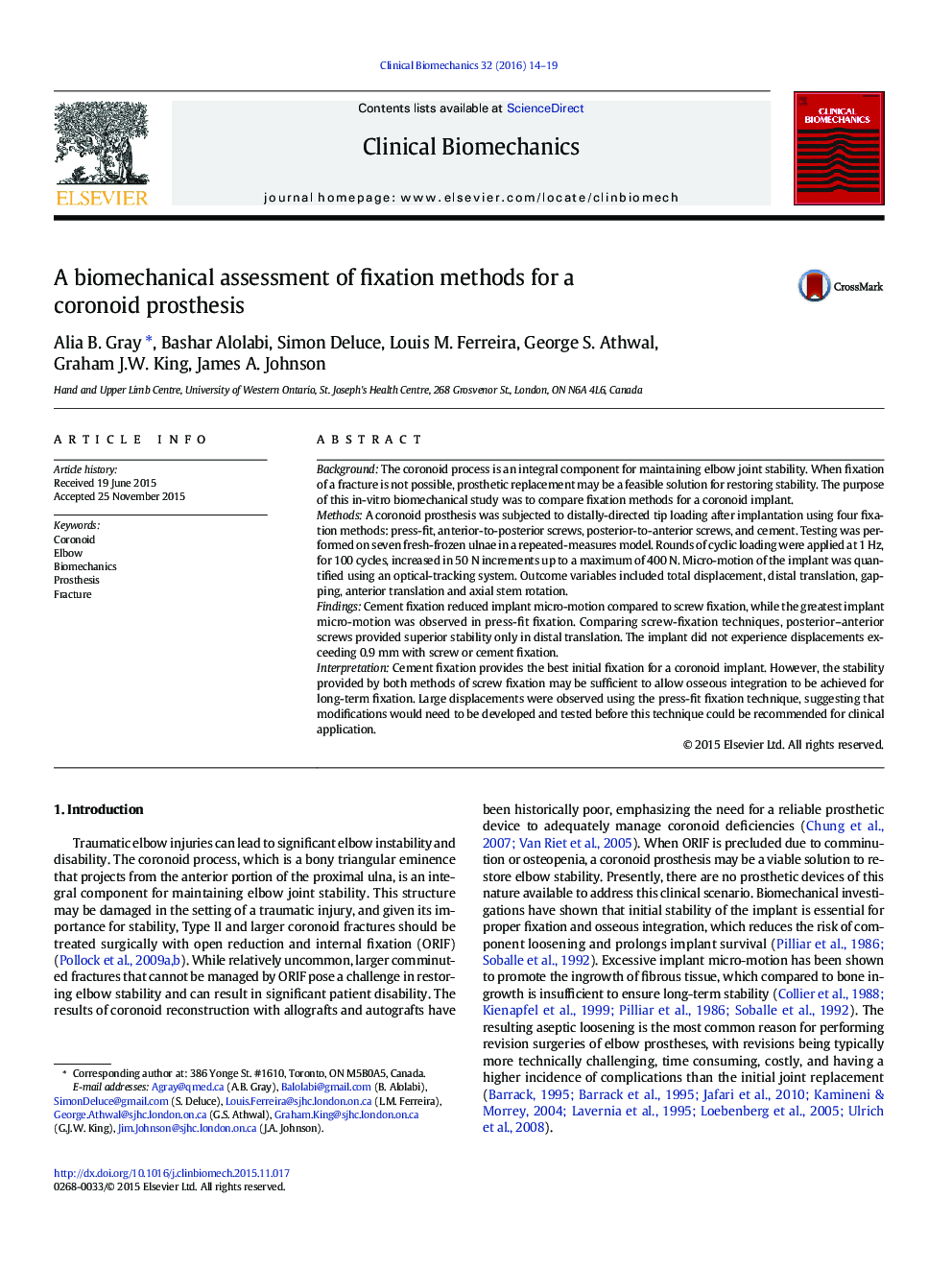| کد مقاله | کد نشریه | سال انتشار | مقاله انگلیسی | نسخه تمام متن |
|---|---|---|---|---|
| 6204594 | 1603746 | 2016 | 6 صفحه PDF | دانلود رایگان |
- A coronoid prosthesis was subjected to distally-directed tip loading after implantation using four fixation methods.
- Micro-motion of the implant was quantified using an optical-tracking system.
- The largest implant micro-motion was observed in press-fit fixation.
- Cement fixation reduced implant micro-motion compared to screw fixation.
- The implant did not experience displacements exceeding 0.9Â mm with screw or cement fixation.
BackgroundThe coronoid process is an integral component for maintaining elbow joint stability. When fixation of a fracture is not possible, prosthetic replacement may be a feasible solution for restoring stability. The purpose of this in-vitro biomechanical study was to compare fixation methods for a coronoid implant.MethodsA coronoid prosthesis was subjected to distally-directed tip loading after implantation using four fixation methods: press-fit, anterior-to-posterior screws, posterior-to-anterior screws, and cement. Testing was performed on seven fresh-frozen ulnae in a repeated-measures model. Rounds of cyclic loading were applied at 1Â Hz, for 100Â cycles, increased in 50Â N increments up to a maximum of 400Â N. Micro-motion of the implant was quantified using an optical-tracking system. Outcome variables included total displacement, distal translation, gapping, anterior translation and axial stem rotation.FindingsCement fixation reduced implant micro-motion compared to screw fixation, while the greatest implant micro-motion was observed in press-fit fixation. Comparing screw-fixation techniques, posterior-anterior screws provided superior stability only in distal translation. The implant did not experience displacements exceeding 0.9Â mm with screw or cement fixation.InterpretationCement fixation provides the best initial fixation for a coronoid implant. However, the stability provided by both methods of screw fixation may be sufficient to allow osseous integration to be achieved for long-term fixation. Large displacements were observed using the press-fit fixation technique, suggesting that modifications would need to be developed and tested before this technique could be recommended for clinical application.
Journal: Clinical Biomechanics - Volume 32, February 2016, Pages 14-19
